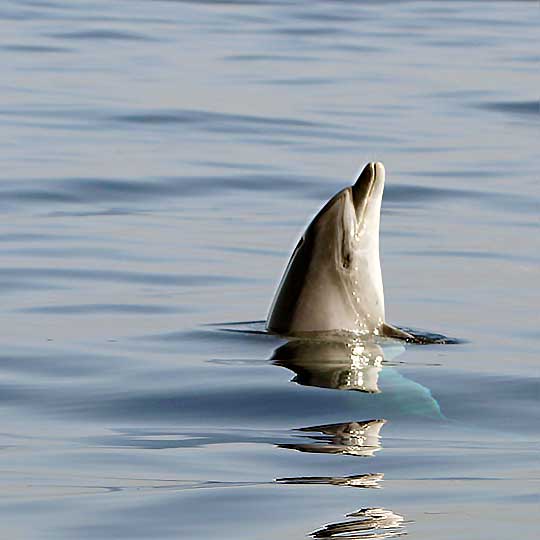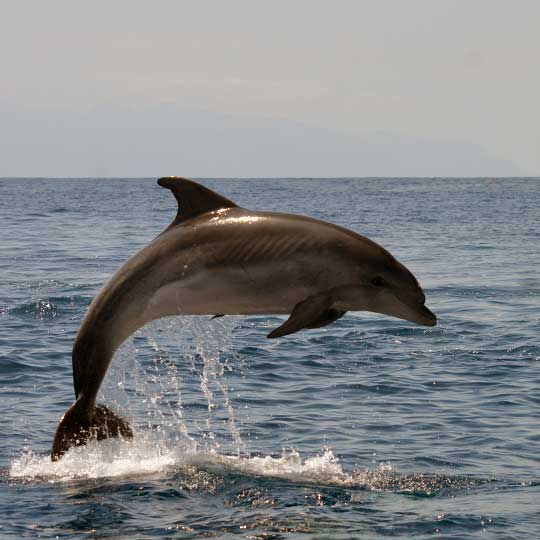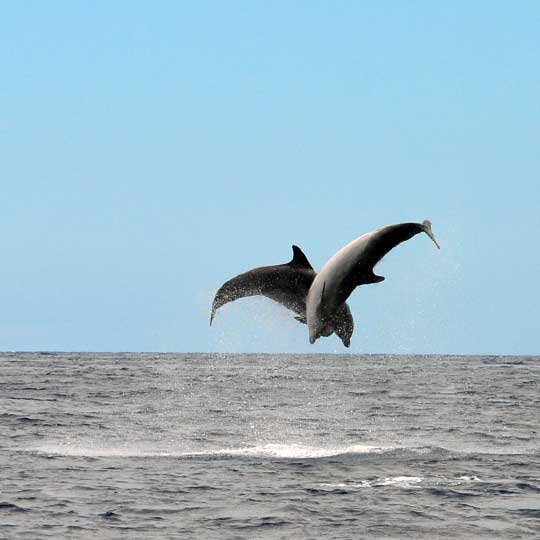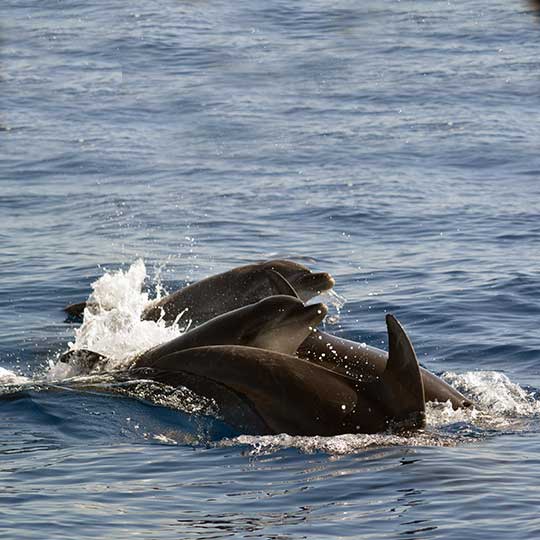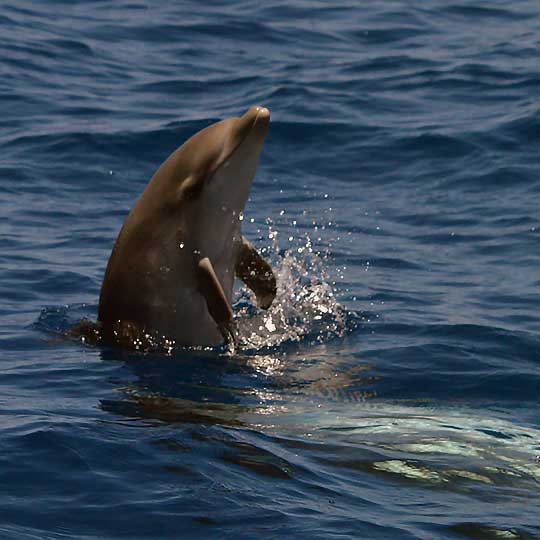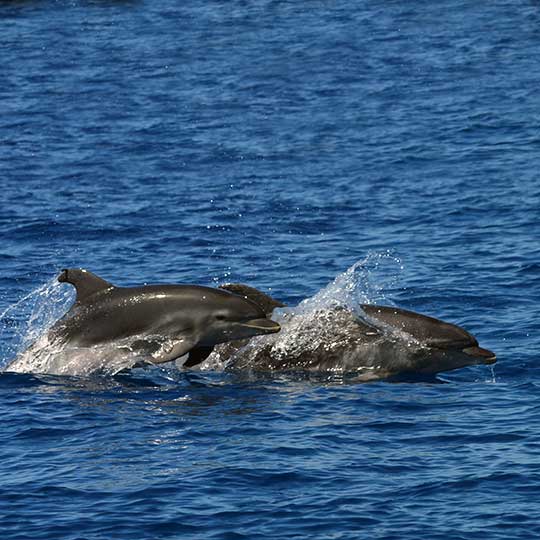Bottlenose Dolphins in Tenerife
Tursiops truncatus
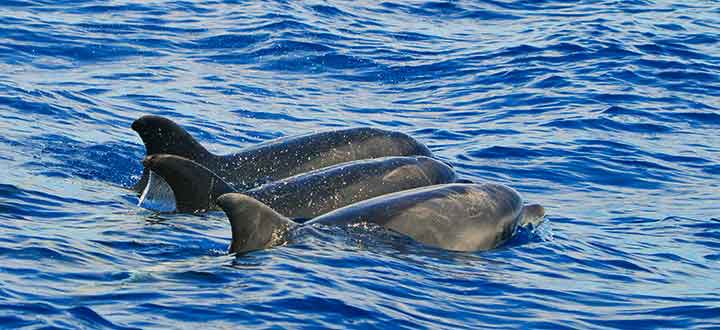
Bottlenose Dolphin Sightings
The Bottlenose dolphin is the second most common cetacean species we encounter on our Costa Adeje whale and dolphin watching tours in Tenerife. There are two different ecotypes of Bottlenose dolphins that inhabit the southern coast of Tenerife; the coastal resident pods and the oceanic pods.
Costa Adeje, on the south coast of Tenerife, offers warm and sheltered seas creating the perfect environment for both of the Bottlenose dolphin ecotypes to thrive. The steep underwater topography of Tenerife creates upwelling of deep ocean currents bringing enriching marine life to the upper water column where Bottlenose dolphins feed primarily on schooling fish.
The coastal ecotype tends to prefer the shallow shoreline to hunt fish and socialise, the oceanic ecotype tends to be seen further offshore in the deep ocean. The two ecotypes of Bottlenose dolphin in Tenerife also differ in pod size, behaviour and appearance. The oceanic ecotype is larger and more robust, often seen in pods of over 50 cetaceans and very often active around the whale watching boat. The coastal ecotype tends to be a smaller size found in small pods of no more than 8-10 cetaceans with shy behaviour.

Bottlenose Dolphin Info
Both the oceanic and coastal ecotypes of Bottlenose dolphins are grey in colour with subtle shading. Their backs are typically dark grey, the sides a lighter grey and their undersides almost white. This is called countershading and acts like ocean camouflage making it hard for their prey to see underwater when they are swimming.
Bottlenose dolphins are the largest of the beaked dolphin species with males growing up to 4 metres in length and weighing up to 600 kg, the females being slightly smaller. Bottlenose dolphins typically live between 40-60 years. Female and juvenile Bottlenose dolphins live in mixed pods while adult males usually form their own small pods. Both groups regularly mix while hunting, socialising and mating. They communicate using chirps, squeaks and whistles.
The main prey of the Bottlenose dolphin is small fish found in the upper water column. The pods often work together as a group herding the fish into a bait ball making it easier to harvest fish from the school. Bottlenose Dolphins use active echolocation during their hunts for schools of fish, something we can listen to during the tours on our marine hydrophone.


